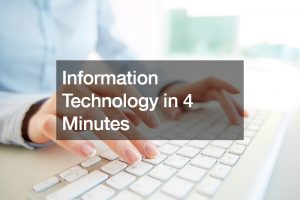For people with disabilities, technology can be a life-changing asset. From making everyday tasks easier and more accessible to providing a sense of community and connection, technology can play an essential role in enhancing the quality of life for those living with disabilities. Here are 12 ways that technology is providing more inclusivity and accessibility for people with disabilities:
1. Alerting systems for when someone parks in your spot
For people who have mobility impairments or use wheelchairs, finding an accessible parking spot can be a challenge. But there are now warning systems that can notify you via text or email when someone has parked in your spot. This way, you can avoid searching for a spot and stay focused on the task at hand.
2. Text-to-speech and speech-to-text translation
For nonverbal people or those with difficulty speaking, text-to-speech translation can be a life-saving technology. This software takes the written text and converts it into spoken words, making communication easier for those who might not have other means.
There’s also the speech-to-text feature, which does the opposite — it takes spoken words and converts them into written text. This can be helpful for people who are hard of hearing or have difficulty understanding spoken language.
3. Wheelchair accessible ramps
In many cases, technology is also helping to make physical spaces more accessible for people with disabilities. For example, wheelchair-accessible ramps are becoming increasingly common in public places, making it easier for people with mobility impairments.
4. Closed captioning
For people who are deaf or hard of hearing, closed captioning is a life-saving technology. It provides a text version of what is being said on television, allowing those with hearing impairments to follow along and participate in conversation just like everyone else. This comes in a close second to hearing-impaired software for computers and phones, amplifying sound and providing subtitles for anything being said on the screen.
5. Braille displays

Braille displays are a crucial means of accessing information for people who are blind or have low vision. These displays take digital text and convert it into braille, allowing those with vision impairments to read what is on the screen. Additionally, braille displays can now be used with smartphones and other mobile devices, providing even more accessibility.
6. Screen readers
Screen readers are another vital technology for those with low vision or blindness. They work by reading aloud the text on the screen, allowing those with vision impairments to access information in a way similar to how others read. That’s why they’re such an essential tool for those who are studying or working on a computer.
7. GPS and orientation devices
GPS and orientation devices are becoming increasingly common and prove invaluable for people with disabilities. These devices can provide turn-by-turn directions, helping those with visual impairments or blindness to navigate their surroundings. They can also be helpful for people with memory impairments, as they can help remind the user of where they are and where they need to go.
8. Automatic door openers
Automatic door openers are another standard piece of technology that is helping to make physical spaces more accessible. These door openers allow people with mobility impairments to open doors without assistance, making it easier to get around because they don’t have to wait for someone to help them.
9. Adjustable desks
Adjustable desks can be a game-changer for people who have difficulty sitting or standing for long periods. These desks allow the user to sit or stand as needed, making it easier to participate in activities and stay engaged in their work. Furthermore, they can be helpful for people with a wide range of disabilities, not just those who have difficulty sitting or standing.
10. Telecommunication devices
For people with severe hearing impairments, telecommunication devices can be a vital way to stay connected with the world around them. These devices amplify sound and provide a straightforward way to communicate, making it possible for those with hearing impairments to participate in conversations.
11. Augmented and virtual reality
Augmented and virtual reality are emerging technologies proving to be valuable for people with disabilities. These technologies can be used to provide visual aids for people who are blind or have low vision or for helping those with autism to learn social skills.
12. Service animals
While not technically a “technology,” service animals are increasingly common and positively impact people’s lives with disabilities. These animals are trained to perform specific tasks, such as assisting those who are blind or have low vision or providing emotional support to those with mental health disorders.
Technology provides more opportunities for people with disabilities to live fuller, more inclusive lives. From the car to the computer, there are many ways that technology is changing the way we interact and live our lives. These 12 different ways that technology impacts people with disabilities daily show how much progress has been made in recent years and how much more there is still to do.




